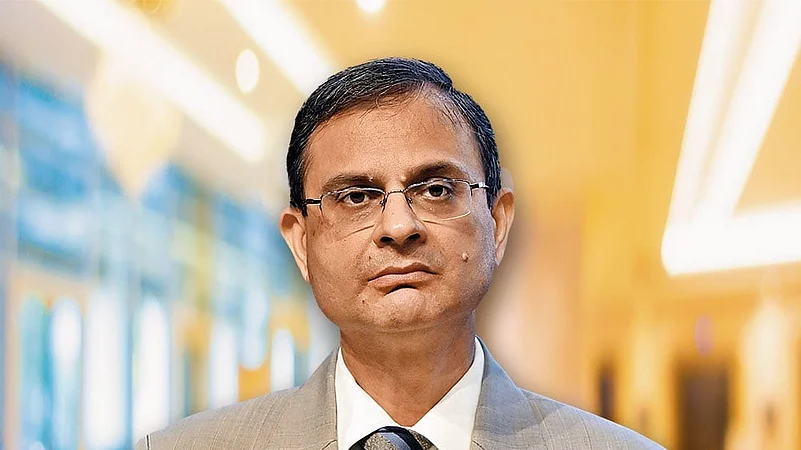The Reserve Bank of India held the benchmark lending rate steady at 5.5% in its August policy review, keeping the focus squarely on stability amid mixed economic signals. This marks the first meeting where the central bank has pressed pause after front-loading 100 basis points worth of rate cuts over the past three meetings.
Rate-sensitive stocks, including banks, NBFCs, auto and real estate, traded largely muted following the announcement. Bank Nifty slipped marginally, while the Nifty Auto and Realty indices fell between 0.4% and 0.8%. The benchmark indices, Nifty 50 and Sensex also gave up their marginal early gains in a knee-jerk reaction.
The RBI’s Monetary Policy Committee retained its ‘neutral’ stance and flagged a cautiously optimistic outlook. “Domestic growth is holding up and evolving along expected lines, though high-frequency indicators showed mixed trends in May and June,” said RBI Governor Sanjay Malhotra. He added that India continues to be well-positioned in a shifting global landscape, drawing strength from its fundamentals and ample buffers.
"The RBI continues to highlight global uncertainties, including tariff-related risks and volatile capital flows, as key watchpoints. At the same time, India’s domestic macro environment remains resilient, buoyed by strong government capex, stable rural demand, and improving liquidity conditions," said Anil Rego, Founder & Fund Manager of Right Horizons PMS.
"From a market perspective, the RBI’s tone will be viewed as growth-supportive without being reckless, especially as inflation is expected be at 3.1% for FY26. Rate-sensitive sectors such as banking, real estate, and autos could benefit from the sustained dovish backdrop," Rego added.
Meanwhile, inflation estimates also came in for attention as the central bank revised its Consumer Price Index (CPI) projections downward across most quarters of FY26, pointing towards easing price pressures. For the full fiscal year, headline inflation is now expected to average 3.1%, down from the earlier forecast of 3.7%. The sharpest revision came for the July–September quarter, where inflation is now pegged at 2.1%, a steep cut from the prior 3.4% estimate. On the other hand, Q3 inflation has been revised to 3.1% from 3.9%.
That said, the central bank warned of a possible uptick in retail inflation in the last quarter of the fiscal, in line with market expectations. However, core inflation, which strips out food and fuel, is likely to remain anchored around the 4% mark.
In the previous policy review, the RBI had surprised with a 50 basis point cut and a shift in stance from ‘accommodative’ to ‘neutral’. This time, the central bank largely met expectations, with many analysts having predicted a ‘dovish pause’ alongside a downward revision to inflation estimates.
With policy rates now down by a full percentage point over three meetings, the RBI appears to be taking a breather letting past cuts seep through the economy, while keeping a close watch on global and domestic developments.



























